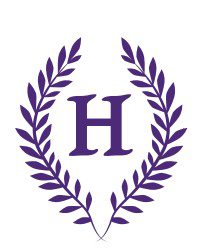Science
Our Science lead is Mrs L Benbow.
Science Curriculum Statement
Intent:
The National Curriculum for Science at Key Stage 2 enables pupils to:
- Develop scientific knowledge and conceptual understanding through the specific disciplines of biology, chemistry and physics;
- Develop understanding of the nature, processes and methods of science through different types of science enquiries that help them to answer scientific questions about the world around them;
- Assimilate the scientific knowledge required to understand the uses and implications of science, today and for the future.
At Heatherside, we believe Science is a core part of any child’s learning journey: Science holds the key to unlocking a lifelong curiosity and wonderment about the world around us. Pupils are encouraged to be curious, ask questions about what they observe and will be helped to understand scientific ideas and phenomena by using different types of enquiry to answer their own questions.
We want to support out children to:
|
|
|
|
Implementation
Science is taught weekly with a key idea/question investigated within each unit. Scientific knowledge and skills are taught in conjunction with each other. Where possible, children are given the opportunity to link their learning to mathematics through the use of measurement and statistics.
Our Science Curriculum is sequenced coherently so useful knowledge and skills builds through the three distinct disciplines of biology, chemistry and physics, ensuring both the children’s substantive (scientific) and disciplinary (skills) knowledge are built upon in unison. The National Curriculum is broken into units of work which are then shared between year groups. Each year group plan their own science lessons using the progression of skills document to determine specific learning objectives, build upon prior knowledge and ensure a complete coverage of the curriculum.
Whilst all disciplinary skills are taught from Year 3 onwards, our planning and teaching allows pupils to become more confident when using these because they are embedded within lessons. Repeated exposure will allow children the opportunity to demonstrate increased independence by the time they reach Years 5 and 6. The same approach is taken with the use of scientific language so that pupils become familiar with the necessary vocabulary and can use it accurately before moving onto KS3. This learning is supported through the use of widgits, word banks and working walls.
Impact
Through the successful teaching of science at Heatherside Junior School, our approach results in fun, engaging and a high-quality science education, which provides children with the foundations to understand the world.
In order to assess the success of the curriculum, pupils will be able to demonstrate their learning through the use of pupil voice, carefully planned assessment tasks and book monitoring.
In order to demonstrate that we have accomplished our aims, pupils should:
- Be able to question ideas and reflect on their existing knowledge.
- Make links between different areas of science and other subject areas
- Demonstrate that they are becoming increasingly independent when instigating their own scientific questions and interpreting their findings
- Show confidence to use and explain scientific vocabulary.
- Transition to the next stage of their education with a keen interest in the continued learning of this subject.
Contribution to SMSC and British Values:
- Enabling a better understanding of meaning and purpose in natural and physical phenomena.
- Promoting an interest in all living things: from the smallest micro-organism to the largest mammals and plants.
- Creating a curiosity about materials, forces, space and the beauty in natural objects.
- Encouraging an open-minded approach to others’ ideas, and an ability to draw conclusions based on evidence rather than personal views.
- Considering the environment, the use of natural resources, and the effect on the future of the planet and its inhabitants.
- Discussions and practical activities in groups which encourages team work and taking roles of responsibility.
- Making links with discoveries in the past and work being carried out for our future.
- Exploring discoveries and contributions made by men and women across the world in all countries and cultures.

